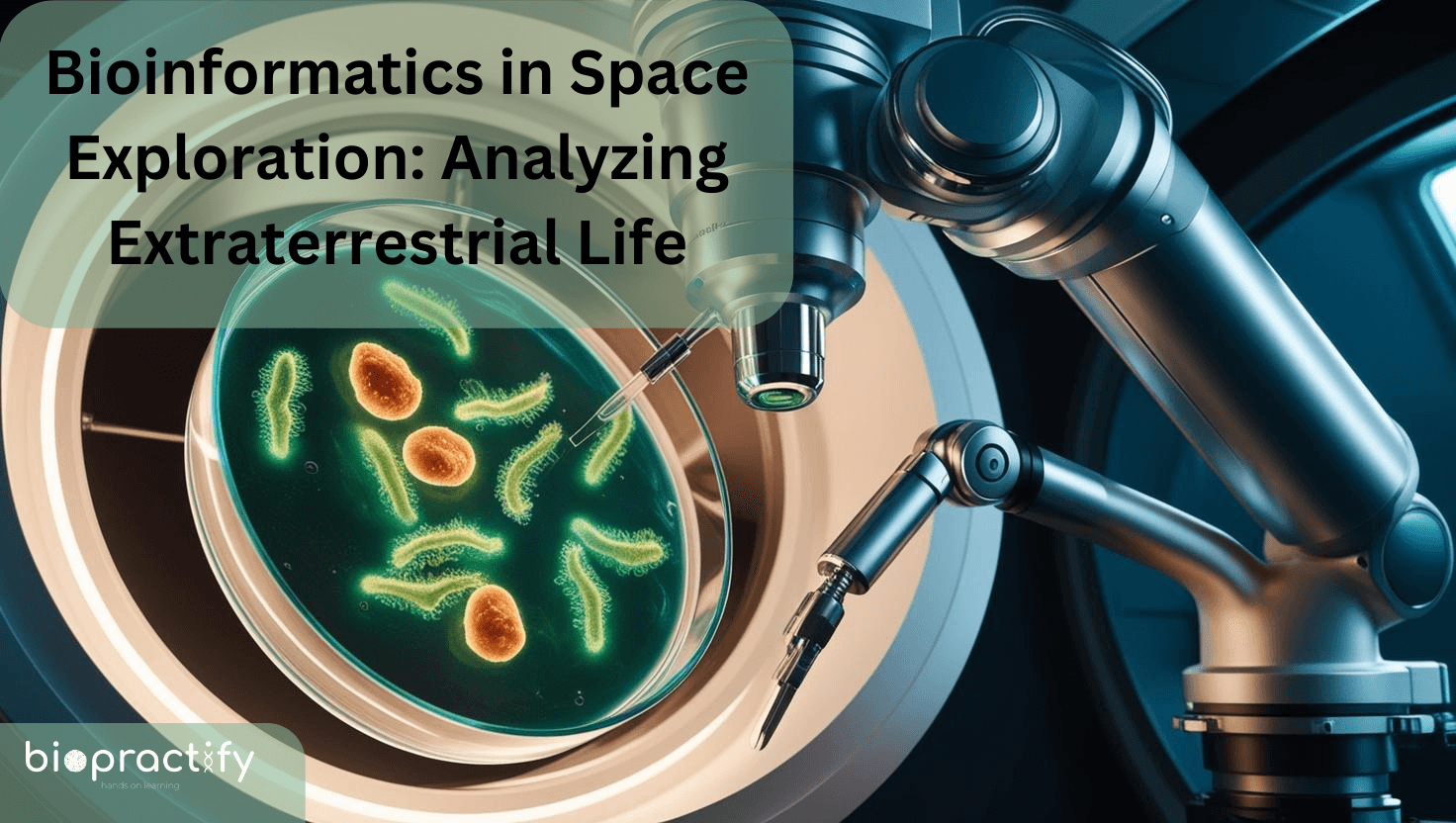Introduction
The search for extraterrestrial life has always fascinated scientists and space enthusiasts. With advancements in bioinformatics in space exploration, we now have sophisticated tools to analyze biological data beyond Earth. This field is revolutionizing how we study microbial life on other planets, decode genetic materials, and even understand how space affects human biology.

The Role of Bioinformatics in Space Exploration
Bioinformatics combines biology, computer science, and data analysis to interpret biological data. In space research, it plays a vital role in:
- Analyzing microbial life on Mars and other celestial bodies.
- Studying astronaut health by understanding genetic changes due to space radiation.
- Predicting the viability of extraterrestrial ecosystems through computational models.
Read more about the importance of bioinformatics in modern science.
How NASA Uses Bioinformatics to Study Extraterrestrial Life
NASA and other space agencies leverage bioinformatics technologies in their missions. The Perseverance Rover, for example, is equipped with instruments to detect biosignatures in Martian soil.
Some of the main applications include:
- Genomic sequencing of microbes found on the International Space Station (ISS).
- AI-driven data analysis for detecting life-friendly environments.
- Studying extremophiles on Earth to compare potential alien life.
The Potential of DNA Sequencing in Space
Recent advancements allow astronauts to sequence DNA in space using portable sequencing devices. This breakthrough helps in:
- Detecting microbial contamination on spacecraft.
- Understanding genetic adaptations in zero gravity.
- Searching for alien DNA structures.
I
Challenges and Future of Bioinformatics in Space
While bioinformatics for extraterrestrial life holds promise, challenges remain:
- Radiation exposure can affect biological samples.
- Limited computational power on space missions.
- Lack of known reference genomes for alien life.
However, with continuous advancements, bioinformatics will play a crucial role in future missions to Mars, Europa, and beyond.
Conclusion
The integration of bioinformatics in space research is unlocking new possibilities in analyzing extraterrestrial life. As technology advances, we might soon have concrete evidence of life beyond Earth.
By leveraging genomic sequencing, AI, and computational biology, we are taking giant leaps toward answering the age-old question: Are we alone in the universe?


Leave a Reply